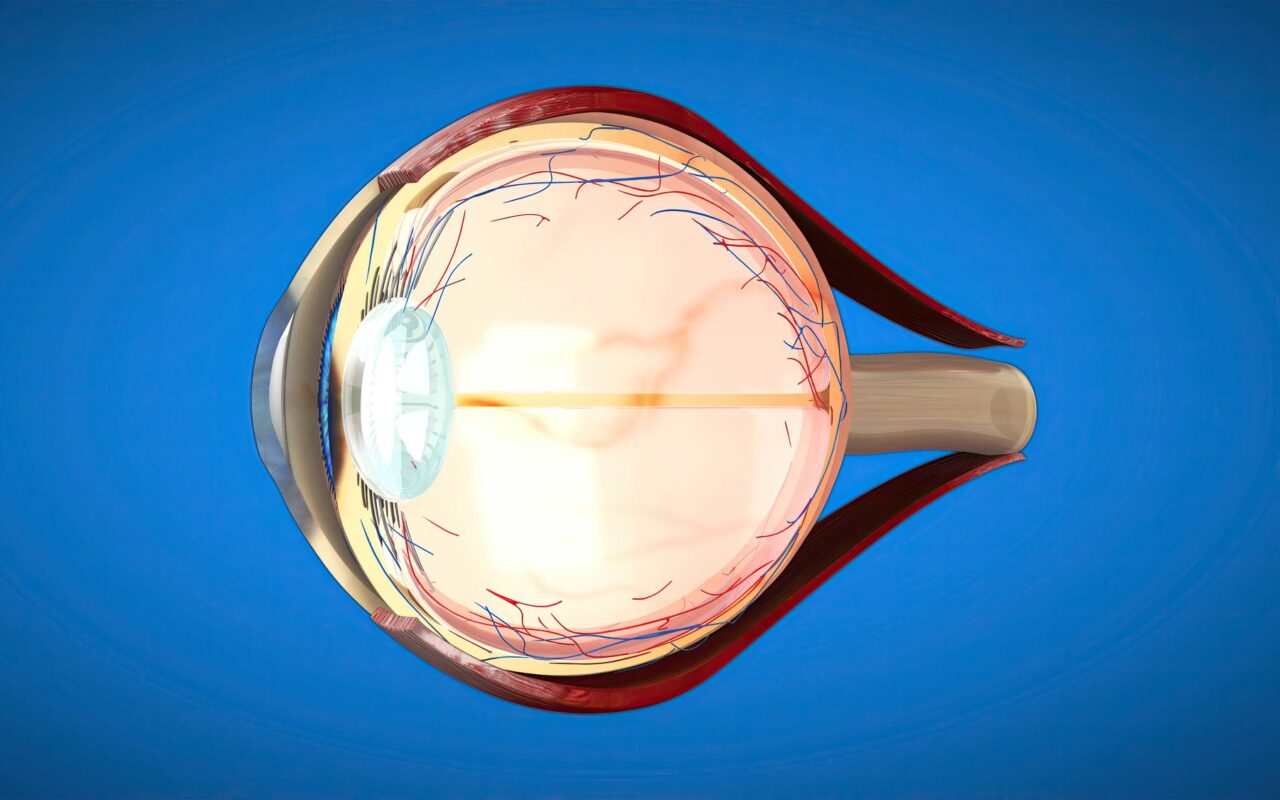
Last Updated on August 14, 2025 by Dr. Azhar I. Salahuddin
When the shape of the eye prevents the light rays from focusing directly on the retina and rather focuses on the front or back of the retina, refractive error occurs. Factors such as the length of the eyeball, aging of the lens, and change in the shape of the cornea contribute to refractive errors.
What is Refraction?
The phenomenon of bending of light when it passes from one object to another is called refraction. Light rays bend when they pass through the cornea and lens, enabling one to see objects. The optical refractive index refers to the number that measures how much light gets refracted in the eye, which gives an idea if you are suffering from a refractive error or not.
What are Types of Refractive Errors?
-
Myopia
Also known as nearsightedness, it occurs when the eyeball is too long for the refractive power of the cornea and lens. Due to the long size, the light gets focused in front of the retina rather than directly on it. A person suffering from myopia has trouble seeing distant objects clearly.
-
Hyperopia
This is a common refractive error where people have trouble seeing near objects as compared to faraway objects. It’s also known as farsightedness and this occurs when the eyeball is too short for the refractive power of the cornea and lens. This causes the light to focus behind the retina, which makes it difficult to focus clearly on objects that are near.
-
Astigmatism
When the cornea or lens isn’t perfectly round or spherical, astigmatism occurs. In this condition, the eye cannot focus the light evenly onto the retina, which causes objects to appear stretched out and blurred at any distance.
-
Presbyopia
This is an age-related condition where one loses the ability to focus on anything up close. When people turn 40 years and above, the lens becomes stiff and can’t change its shape easily. This doesn’t allow the eye to focus on close objects clearly.
Also Read: Nearsightedness vs. Farsightedness: Causes, Symptoms & Prevention
What Causes Refractive Errors?
- Genetics: Children whose parents suffer from certain refractive errors are more likely to develop refractive errors themselves.
- Environmental: Factors like age and health issues can greatly affect the health of the eye and cause refractive errors.
What are the Signs and Symptoms of Refractive Errors?
The most common symptom of refractive error is blurred vision. Others include:
- Double vision
- Halos around bright lights
- Haziness
- Headaches and eye strain
- Red, itchy, and dry eyes
- Constant watering of the eyes
What are the Treatment Options for Refractive Errors?
-
Eyeglasses
The most common treatment for refractive errors consists of eyeglasses. Based on the degree of error, doctors prescribe appropriate lenses to correct it and give you clear, optimal vision.
-
Contact Lenses
Made of plastic, contact lenses provide clearer and a wider field of vision. They act as the first refractive surface for the light rays entering the eyes and cause precise focus or refraction. They offer great comfort too. However, it is crucial to wash your hands and clean the lenses before putting them on to reduce the risk of infection. Discuss with your doctor if your eye condition supports the use of contact lenses.
-
Refractive Surgery
This surgery changes the shape of the cornea permanently. By doing so, the focusing power of the eye is restored as it allows the light rays to focus precisely on the retina for improved vision.
Before opting for refractive surgery, consult with your doctor if this is the right treatment for you. Do not take blurred vision and watery eyes for granted. These may be symptoms of underlying refractive errors.
Book an appointment today & get an accurate diagnosis at InSight Vision Center and have it rectified at the earliest to keep complications at bay.

Dr. Azhar I. Salahuddin is an ophthalmologist and is fellowship-trained in cornea, external diseases, and refractive surgery. Dr. Salahuddin has been performing cataract surgery for over 19 years and specializes ocular reconstruction, corneal transplantation surgery as well as vision correction through a variety of intraocular lenses. Dr. Salahuddin is board-certified by the American Board of Ophthalmology and was trained at Boston University.

